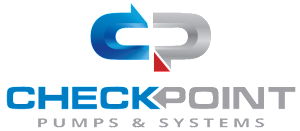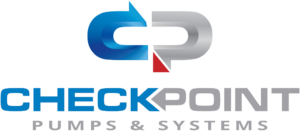7 Essential Tips for Choosing the Right Chemical Diaphragm Pump
The selection of the right chemical diaphragm pump is critical for industries that rely on the precise transfer of corrosive and hazardous fluids. According to the latest market research report by Grand View Research, the global diaphragm pump market is expected to reach USD 4.08 billion by 2025, with chemical diaphragm pumps representing a significant segment due to their high efficiency and adaptability. These pumps are renowned for their ability to handle a variety of chemicals while minimizing the risk of leaks, making them essential for chemical processing, pharmaceuticals, and water treatment industries. As demand for environmental safety and sustainability grows, selecting the appropriate chemical diaphragm pump becomes increasingly important to ensure compliance and operational efficiency. In this blog, we will explore seven essential tips to guide you through the decision-making process, empowering you to make an informed choice that aligns with your specific application needs.

Understanding Your Fluid Characteristics for Optimal Pump Selection
When selecting a chemical diaphragm pump,
understanding the fluid characteristics is paramount
for optimal performance. Fluids exhibit a wide range of properties, including viscosity, pH, specific gravity, and the presence of solids or particulates.
For instance, a report by the Fluid Handling Industry indicates that pumps handling highly viscous fluids, such as polymers, may require specialized diaphragm designs to ensure
efficient flow and minimize wear. This adaptability is essential, given that viscosity can vary significantly under different temperature conditions.
Additionally, the chemical compatibility of the pump materials with the fluid being pumped cannot be overstated.
According to a study from the Chemical Engineering Journal, improper material selection can lead to rapid degradation and failure, especially when handling aggressive chemicals such as acids or solvents.
Selecting a pump made of materials resistant to corrosion, such as PTFE or PVDF, is crucial for maintaining operational reliability and safety.
Thus, in-depth knowledge of the fluid characteristics not only influences the pump's longevity but also its ability to perform effectively under varying operational conditions.
Evaluating Material Compatibility to Avoid Corrosion and Damage
When selecting a chemical diaphragm pump, assessing material compatibility is crucial to prevent corrosion and damage. Recent studies have highlighted the importance of incorporating eco-friendly corrosion inhibitors derived from natural extracts, such as Foeniculum vulgare and Pimpinella anisum. These natural compounds offer viable alternatives to traditional chemical inhibitors, especially in challenging environments like seawater, where corrosion risks are significantly heightened. The effectiveness of these extracts, in conjunction with chemical assessments, can lead to a more sustainable approach in pump material selection.
In addition to natural extracts, the evaluation of material compatibility using advanced methodologies, such as data-driven assessments, remains vital. Research focused on Fe-Cr-Ni alloys illustrates the susceptibility to stress corrosion cracking (SCC) when exposed to chloride-rich conditions. Utilizing machine learning models, such as XGBoost, enhances predictive accuracy regarding corrosion rates, thus informing more effective material choices for pumps operating under similar stress-inducing conditions. Moreover, insights from studies assessing the longevity of materials in aggressive environments, like the corrosion behavior of various steels in liquid lead-bismuth eutectic, further underscore the necessity of comprehensive material evaluations to ensure pump reliability and durability over time.
7 Essential Tips for Choosing the Right Chemical Diaphragm Pump - Evaluating Material Compatibility to Avoid Corrosion and Damage
| Material Type | Compatibility with Chemicals | Corrosion Resistance | Temperature Range (°C) | Typical Applications |
|---|---|---|---|---|
| Polypropylene (PP) | Acids, Bases, Alcohols | Good | -10 to 80 | Chemical Processing |
| PVDF | Strong Acids, Bases, Solvents | Excellent | -20 to 120 | Pharmaceuticals |
| Stainless Steel | Water, Wastes | Good (varies with grade) | -20 to 200 | Water Treatment |
| Teflon (PTFE) | Most Chemicals, Solvents | Outstanding | -40 to 250 | Food Industry, Chemicals |
| Nitrile Rubber | Oils, Fuels | Fair | -30 to 100 | Oil & Gas |
Assessing Pump Performance Metrics: Flow Rate and Pressure Requirements
When selecting a chemical diaphragm pump, assessing performance metrics such as flow rate and pressure requirements is crucial. Flow rate, typically measured in liters per minute (L/min) or gallons per minute (GPM), indicates how much fluid the pump can move in a specified time. According to a report by the Hydraulic Institute, the optimal flow rate for applications involving corrosive liquids often ranges between 10-200 GPM, depending on the specific process needs. A precise understanding of your application's flow rate demands will ensure operational efficiency and reliability while reducing the risk of pump cavitation and wear.

Pressure, often expressed in pounds per square inch (PSI) or bar, is equally vital in the selection process. Many chemical processes require high discharge pressures to maintain system integrity. According to research published by the American Society of Mechanical Engineers (ASME), diaphragm pumps can typically handle pressures from 30 PSI up to 100 PSI or more, catering to various industrial applications. It’s important to select a pump that exceeds the maximum pressure requirement of your system while also considering potential pressure drops within the piping. Proper evaluation of these two performance metrics ensures that the selected pump will operate effectively, safely handling the specific chemicals involved.
Considering Maintenance and Service Needs for Longevity
When selecting a chemical diaphragm pump, one of the most critical aspects to consider is its maintenance and service needs, which directly influence its longevity. Regular maintenance not only ensures optimal performance but also helps prevent unexpected failures that can disrupt operations. It's essential to choose a pump that offers easy access to key components, making routine inspections and repairs more manageable. Opt for models with clear maintenance guidelines and readily available replacement parts to minimize downtime.
Another important tip is to evaluate the service history and support offered by the manufacturer. Reliable customer support can make a significant difference in the longevity of the pump. Before making a decision, research the manufacturer's reputation for service response times and the availability of technician assistance. Additionally, consider investing in training for your staff on proper usage and routine maintenance procedures, ensuring that they are well-equipped to handle minor issues before they escalate. By prioritizing maintenance and service needs, you can extend the lifespan of your chemical diaphragm pump significantly.
7 Essential Tips for Choosing the Right Chemical Diaphragm Pump
This chart illustrates the importance of various factors when selecting a chemical diaphragm pump, with a focus on maintenance and service needs for longevity.
Matching Pump Size and Configuration to Your Specific Application
When selecting a chemical diaphragm pump, understanding the specific requirements of your application is crucial. The size of the pump must be carefully matched with the flow rates and pressure levels needed for optimal performance. For instance, a pump that is too small may struggle to maintain the necessary pressure, leading to inefficiencies and potential operational failures. Conversely, an oversized pump can waste energy and increase costs unnecessarily. Thus, conducting a thorough assessment of your system's demands is the first step to making an informed choice.
In addition to size, the configuration of the pump is equally important. Different applications may require pumps made from specific materials to handle various chemicals safely, or they might need unique designs to facilitate installation in tight spaces. It’s essential to consider whether the pump's diaphragm material can withstand the chemical properties of the liquids being pumped, as well as the temperature and pressure conditions. This tailored approach not only prolongs the lifespan of the pump but also ensures reliability in critical processes, enhancing overall system efficiency.

Related Posts
-

Unveiling the Best Chemical Pumps: A Comprehensive Comparison Guide
-

7 Essential Tips for Choosing the Right Diaphragm Pump for Your Business Needs
-

7 Reasons Why Electric Diaphragm Pumps Are Your Top Choice for Efficient Fluid Management
-

Evaluating Cost-Effectiveness: A Comparative Analysis of Pump Rentals vs. Purchasing Equipment

Whether your solution requires a single pumping application or an expansive engineered system,
CheckPoint is committed to becoming your partner in excellence.



